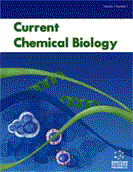Abstract
During evolution, different heterotrophic organisms have acquired photosynthetic prokaryotes to transform them into their „tiny green slaves”, the chloroplasts. During endosymbiogenesis plastids have partially lost their independence, and tight co-regulation between the host nucleus and the organelle has been developed. In this work, the general features and the special characteristics (such as plastid morphology, number of plastid bounding membranes, periplastidial space and nucleomorph, thylakoid arrangement, plastid genome, plastid-located storage materials, carboxysomes and pyrenoids, plastoglobuli and eyespots, and other plastid inclusions) of the chloroplasts of the most important algal groups are reviewed in details. Several unicellular algae possess only (one or a few) chloroplast(s). In more complex organisms, such as for instance brown algal thalli and land plants, plastid form and function have been diversified and plastids got gradually specialized in parallel with the evolution of cells with different specific functions. Cells that have lost their photosynthetic activity developed special plastid types with less or no chlorophyllous pigments and thylakoids, but with specific functions such as storage (leucoplasts) or carotenoid synthesis (chromoplasts). In other cells (e.g. in dividing regions) proplastids can be found with poorly developed thylakoid system. In algae, plastid diversification and the interconversion of the different plastid types into each other are discussed as a consequence of (i) changes in the trophic mode of the algae, (ii) increasing complexity of the vegetative body, (iii) increasing complexity of the life cycle, (iv) senescence processes and (v) changes induced in plastid structure by environmental stimuli.
Keywords: Algae, chloroplast, plastid differentiation, plastid interconversions, plastid types, thylakoids, eukaryotic algae, proteobacteria, protoeukaryotes, kleptoplasts
Current Chemical Biology
Title:Plastid Structure, Diversification and Interconversions I. Algae
Volume: 6 Issue: 3
Author(s): Katalin Solymosi
Affiliation:
Keywords: Algae, chloroplast, plastid differentiation, plastid interconversions, plastid types, thylakoids, eukaryotic algae, proteobacteria, protoeukaryotes, kleptoplasts
Abstract: During evolution, different heterotrophic organisms have acquired photosynthetic prokaryotes to transform them into their „tiny green slaves”, the chloroplasts. During endosymbiogenesis plastids have partially lost their independence, and tight co-regulation between the host nucleus and the organelle has been developed. In this work, the general features and the special characteristics (such as plastid morphology, number of plastid bounding membranes, periplastidial space and nucleomorph, thylakoid arrangement, plastid genome, plastid-located storage materials, carboxysomes and pyrenoids, plastoglobuli and eyespots, and other plastid inclusions) of the chloroplasts of the most important algal groups are reviewed in details. Several unicellular algae possess only (one or a few) chloroplast(s). In more complex organisms, such as for instance brown algal thalli and land plants, plastid form and function have been diversified and plastids got gradually specialized in parallel with the evolution of cells with different specific functions. Cells that have lost their photosynthetic activity developed special plastid types with less or no chlorophyllous pigments and thylakoids, but with specific functions such as storage (leucoplasts) or carotenoid synthesis (chromoplasts). In other cells (e.g. in dividing regions) proplastids can be found with poorly developed thylakoid system. In algae, plastid diversification and the interconversion of the different plastid types into each other are discussed as a consequence of (i) changes in the trophic mode of the algae, (ii) increasing complexity of the vegetative body, (iii) increasing complexity of the life cycle, (iv) senescence processes and (v) changes induced in plastid structure by environmental stimuli.
Export Options
About this article
Cite this article as:
Solymosi Katalin, Plastid Structure, Diversification and Interconversions I. Algae, Current Chemical Biology 2012; 6 (3) . https://dx.doi.org/10.2174/2212796811206030002
| DOI https://dx.doi.org/10.2174/2212796811206030002 |
Print ISSN 2212-7968 |
| Publisher Name Bentham Science Publisher |
Online ISSN 1872-3136 |
 5
5
- Author Guidelines
- Bentham Author Support Services (BASS)
- Graphical Abstracts
- Fabricating and Stating False Information
- Research Misconduct
- Post Publication Discussions and Corrections
- Publishing Ethics and Rectitude
- Increase Visibility of Your Article
- Archiving Policies
- Peer Review Workflow
- Order Your Article Before Print
- Promote Your Article
- Manuscript Transfer Facility
- Editorial Policies
- Allegations from Whistleblowers
- Announcements

















.jpeg)








